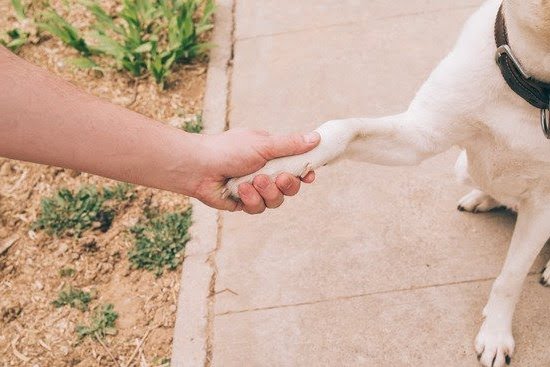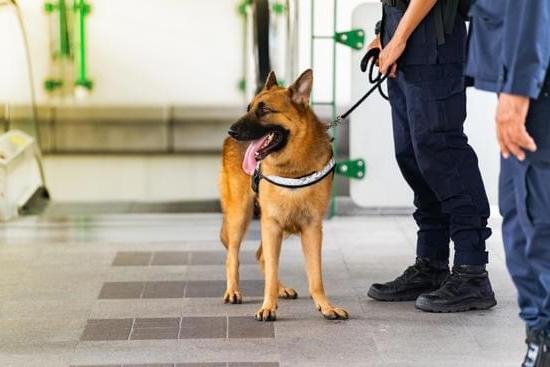Is your dog constantly crying and whining in their crate, causing you and your neighbors undue stress? If so, you are not alone. Many dog owners experience this issue at some point in their pet’s life. In this article, we will explore how to train a dog not to cry in a crate by understanding the reasons behind their behavior, choosing the right crate, introducing the crate positively, and using gradual training methods for reducing crying.
Crying in a crate can be distressing for both the dog and the owner. However, it’s essential to understand that dogs don’t cry in crates to be disobedient or annoying. There are various reasons behind this behavior, such as anxiety, fear, discomfort, or even boredom. By understanding these reasons, it becomes easier to address the root cause of the issue and implement effective training strategies to alleviate the problem.
Choosing the right crate for your dog is crucial for successful training. The crate should be appropriately sized, comfortable, and secure to make your dog feel safe and relaxed inside it. Introducing the crate positively by associating it with positive experiences is also key.
This helps create a positive association with the crate and reduces anxiety or fear related to being inside it. These aspects will be discussed further as we delve into effective crate training methods for reducing crying and promoting calm behavior in our furry friends.
Choosing the Right Crate for Your Dog
When it comes to crate training your dog, choosing the right crate is essential for their comfort and success in the training process. There are various types of crates available, including wire crates, plastic crates, and soft-sided crates. It’s important to consider your dog’s size, breed, and specific needs when selecting a crate.
Here are some factors to consider when choosing the right crate for your dog:
- Size: The crate should be large enough for your dog to stand up, turn around, and lie down comfortably.
- Material: Consider the material of the crate and whether it will suit your dog’s needs. For example, a wire crate provides better ventilation, while a soft-sided crate may be more comfortable for travel.
- Mobility: If you plan to travel with your dog, consider a lightweight and portable crate that is suitable for car rides or flights.
Introducing the crate to your dog in a positive way is also important in their acceptance of it as a safe space. Gradually acclimate them to the crate by keeping it open and allowing them to explore it on their own terms. Using treats and positive reinforcement can help create positive associations with the crate.
Overall, choosing the right crate for your dog sets the foundation for successful crate training. By considering their specific needs and preferences, you can provide them with a comfortable and secure space that will encourage calm behavior in the long run.
Introducing the Crate to Your Dog in a Positive Way
When it comes to crate training your dog, one of the most important steps is introducing the crate to your dog in a positive way. This will help your dog associate the crate with safety and comfort rather than fear and anxiety. Here are some tips on how to introduce the crate to your dog in a positive way:
- Start by placing the crate in an area of your home where your dog spends a lot of time, such as the living room or bedroom. Make sure the crate is comfortable and inviting, with soft bedding and perhaps a favorite toy or blanket inside.
- Encourage your dog to explore the crate on their own terms. Leave the door open and allow them to go in and out as they please. You can also toss treats inside the crate to entice them to check it out.
- Once your dog seems comfortable with the crate, start feeding them their meals near the crate. Gradually move their food bowl closer to the crate each day until eventually you can place it inside.
- When your dog willingly goes into the crate to eat their meals, you can start closing the door for short periods of time while they eat. Gradually increase the amount of time that they spend in the closed crate, always remembering to praise and reward them for calm behavior.
By taking these gradual steps and introducing the crate in a positive way, you can help your dog feel more comfortable and secure in their new space – ultimately reducing their anxiety and minimizing crying when confined. Remember that patience and consistency are key when training a dog not to cry in their crate.
Gradual Crate Training Methods for Reducing Crying
Start Slowly and Gradually
When it comes to training your dog not to cry in the crate, it’s important to take a gradual approach. You should start by getting your dog used to the crate a little bit at a time. This process may take some time, but it is essential for ensuring that your dog feels comfortable and secure in their new space.
Positive Association With the Crate
One effective method for reducing crying in the crate is to create a positive association with the crate. You can do this by placing treats and toys inside the crate and encouraging your dog to explore and interact with them. This will help them see the crate as a safe and enjoyable space.
Desensitization Training
Desensitization training involves gradually increasing the amount of time that your dog spends in the crate. Start by having your dog spend short periods of time in the crate while you are home, gradually increasing the duration as they become more comfortable. This will help reduce anxiety and crying when they are left alone in the crate. Be patient and consistent with this method, as it can take time for your dog to adjust.
By following these gradual training methods, you can effectively teach your dog not to cry in their crate. Consistency, patience, and positive reinforcement are key components of successful crate training. Remember that every dog is different, so be sure to monitor their progress and adjust your training methods as needed for optimal results.
Using Positive Reinforcement Techniques to Encourage Calm Behavior in the Crate
When it comes to crate training, using positive reinforcement techniques can be incredibly effective in encouraging calm behavior in your dog. Positive reinforcement involves rewarding your dog for exhibiting the desired behavior, in this case, being calm and quiet in the crate. This method not only helps to encourage good behavior but also strengthens the bond between you and your furry friend.
Consistent Rewards for Calm Behavior
One of the key aspects of using positive reinforcement is consistency. Whenever your dog exhibits calm behavior in the crate, be sure to reward them with a treat or verbal praise immediately. This will help them understand that being quiet and relaxed in the crate leads to positive outcomes. Over time, they will associate being calm with receiving rewards, making them more likely to continue this desirable behavior.
Clicker Training
In addition to treats and praise, clicker training can also be an effective form of positive reinforcement. By using a clicker to mark the moment when your dog behaves calmly in the crate, you are able to clearly communicate what behavior is being rewarded. With consistent use of the clicker and rewards, your dog will learn that staying quiet in the crate is a behavior that leads to positive consequences.
Training Sessions With Positive Reinforcement
Regular training sessions where you practice having your dog enter and stay quietly in the crate can also be a valuable way to reinforce positive behavior. Start with short periods of time and gradually increase the duration as your dog becomes more comfortable.
Use treats and praise during these practice sessions to reinforce their calm behavior. With patience and consistency, you will likely see improvement over time as your dog learns how to be calm in their crate through positive reinforcement methods.
Incorporating Interactive Toys and Treats to Keep Your Dog Entertained in the Crate
When crate training a dog, it’s important to incorporate interactive toys and treats to keep your furry friend entertained. This helps to distract them from any anxiety or stress they may feel being confined in the crate. The right toys and treats can also create positive associations with the crate, making it a place they enjoy rather than fear.
One way to keep your dog entertained in the crate is by providing them with a variety of interactive toys. Puzzle toys that dispense treats or toys that they can chew on can help keep their minds and mouths busy. These types of toys not only provide mental stimulation but can also offer comfort and security for your dog while they are in the crate.
In addition to toys, using treats can be an effective way to keep your dog entertained in the crate. Chewing on a delicious treat or working to get at a hidden treat within a toy can occupy their time and distract them from any distress about being crated. Whether it’s a favorite bone or a puzzle toy filled with peanut butter, offering tasty rewards can make the crate a positive place for your dog.
| Interactive Toys | Treats |
|---|---|
| Puzzle Toys | Frozen Kongs |
| Chew Toys | Healthy Dental Chews |
Addressing Separation Anxiety and Other Behavioral Issues Related to Crate Crying
One of the most common reasons that dogs cry in their crate is separation anxiety. Dogs are pack animals, and being left alone can be very distressing for them. When a dog feels anxious or stressed, they may vocalize their distress through crying, whining, or barking. It’s important to address this underlying issue when training your dog not to cry in their crate.
To start addressing separation anxiety and other behavioral issues related to crate crying, it’s essential to create a positive association with the crate. This can be done by making the crate a place of comfort and safety for your dog. You can do this by placing their favorite toys, blankets, and treats inside the crate. This will help your dog view the crate as a pleasant space rather than a place of punishment or isolation.
Another effective method for addressing separation anxiety is to practice leaving your dog alone for short periods of time while they are in the crate. Start with just a few minutes at a time and gradually increase the duration as your dog becomes more comfortable. This will help them learn that it’s okay to be alone and that you will always return.
In addition to providing comfort and practicing alone time, incorporating interactive toys and treats into the crate can also help alleviate separation anxiety and reduce crying. Toys such as puzzle feeders or chew toys can keep your dog mentally stimulated while they are in the crate, helping to distract them from any feelings of anxiety or stress.
| Addressing Separation Anxiety | Crate Training Tips |
|---|---|
| Create a positive association with the crate | Start with short periods of time leaving your dog alone |
| Use interactive toys and treats in the crate | Gradually increase alone time duration |
Tips for Creating a Comfortable and Calming Environment in the Crate
When it comes to crate training a dog, creating a comfortable and calming environment is essential in helping to reduce crying and promote positive behavior. The first step in achieving this is choosing the right crate for your dog. It should be spacious enough for your dog to stand up, turn around, and lie down comfortably. Additionally, consider placing blankets or bedding inside the crate to make it cozy and inviting for your furry friend.
Introducing the crate to your dog in a positive way is also crucial for creating a comfortable environment. You can do this by associating the crate with positive experiences, such as giving treats or feeding meals inside the crate. This will help your dog see the crate as a safe and enjoyable space rather than a place of confinement.
Another important factor in creating a calming environment in the crate is addressing any separation anxiety or behavioral issues that may be causing your dog to cry. Using positive reinforcement techniques, such as ignoring crying and rewarding quiet behavior, can help reassure your dog that being in the crate is okay. Additionally, incorporating interactive toys and treats can keep your dog entertained and distracted while inside the crate.
By implementing these tips for creating a comfortable and calming environment in the crate, you can help reduce crying and ensure that your dog sees their crate as a secure and peaceful space. Remember to monitor your progress and adjust training methods as needed to achieve success in crate training.
Monitoring Progress and Adjusting Training Methods as Needed for Success in Crate Training
In conclusion, crate training can be a challenging but ultimately rewarding process for both the dog and the owner. By understanding the reasons behind a dog’s crying in a crate and choosing the right crate for your dog, you are already setting the stage for successful training.
Introducing the crate to your dog in a positive way and utilizing gradual training methods, along with positive reinforcement techniques, can go a long way in reducing crying and encouraging calm behavior in the crate.
In addition to these methods, incorporating interactive toys and treats can keep your dog entertained while in the crate, helping to alleviate boredom and anxiety. It’s also important to address any underlying separation anxiety or other behavioral issues that may be contributing to the crying. Creating a comfortable and calming environment within the crate is essential, as it can help the dog feel secure and at ease.
Furthermore, ongoing monitoring of progress and being willing to adjust training methods as needed is crucial for success in crate training. Every dog is different, so patience and flexibility are key when working through this process. With dedication, consistency, and understanding, you can train your dog not to cry in their crate, creating a safe and comfortable space for them while giving you peace of mind when it comes to confinement.
Frequently Asked Questions
How Do I Get My Dog to Stop Whining in the Crate?
There are a few strategies you can try to get your dog to stop whining in the crate. First, make sure the crate is comfortable and inviting for your dog. You can also try ignoring the whining and only rewarding quiet behavior.
Will Dog Eventually Stop Crying in Crate?
Yes, with consistency and patience, most dogs will eventually stop crying in their crate. It’s important not to give in to their crying and let them out when they are making noise, as this reinforces the behavior.
Does Putting a Blanket Over a Dog Crate Help?
Putting a blanket over a dog crate can help create a cozy and den-like environment for your dog. This can help reduce anxiety and make them feel more secure while inside the crate. Just be sure not to completely cover the crate, as air circulation is still important.

Welcome to the blog! I am a professional dog trainer and have been working with dogs for many years. In this blog, I will be discussing various topics related to dog training, including tips, tricks, and advice. I hope you find this information helpful and informative. Thanks for reading!





